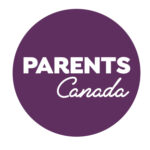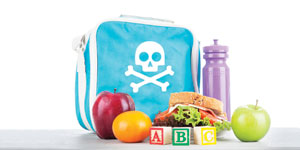Health
5 min Read
Should schools ban food allergens besides peanuts?

October 29, 2014
Health
5 min Read

October 29, 2014

Peanuts yes, but should schools restrict other less common food allergens, too?

“Nuts in schools could cost a child their life,” Erin McCarter said to me. Exactly! This is a real fear for people like me and Erin, a B.C. mom whose daughter is allergic to several foods.
My own daughter, who is six, is allergic to peanuts. One incident sent her to hospital, required an IV and several hours of observation. And that was after using her EpiPen. I don’t want a repeat.
Of course, food allergies don’t end with nuts. Some kids, like Erin’s daughter, can be deathly allergic to foods like eggs and dairy. What then? “If a child at my kids’ school had an anaphylactic allergy to any food, I would expect it to be banned, too,” said Stephanie Medeiros, a teacher and a mother in Burlington, Ont., whose daughter is allergic to peanuts and tree nuts.
“All kids have a right to be educated in the public school system and schools should do what they can to keep these kids safe,” says Erin, who keeps her phone at her side all day “just in case there is an emergency.”
Why are we even debating this? My daughter’s Ontario school locks all doors to the building and requires visitors to be buzzed in; sign-in sheets and volunteer badges identify who’s allowed. Staff and volunteers get criminal records checks and a supervisor oversees busy morning drop-offs, all to keep students safe. So why would any school allow a food through the doors that could cause a student a potentially fatal allergic reaction?
It’s not complicated. Teachers, lunch supervisors and the administration are aware of my daughter’s life-threatening allergy and can handle any problems.
Our school is peanut-free.
“I am somewhere between terrified and confident when I send my daughter to school,” Erin admits.
Terrified? Surely we can do better. Restricting allergic foods also enables all children to participate fully in school activities. Special celebrations, school trips, even crafts, can all be off-limits for kids with severe food allergies. These children already know the stigma of being left out, forgotten and overlooked at events like birthdays and Halloween. They don’t need to be ostracized in their schools as well.
I know I’m not the only parent to be concerned about food in school in the era of heightened food allergy awareness. With children’s sensitivities to nuts, seafood, dairy, eggs, soy and certain fruits, I’m often hard-pressed to find any lunch-box staple that passes the test.
But are schools really equipped to accommodate every child in the population with a food allergy? And as more and more allergens are identified, is it realistic to keep restricting foods in our quest to make schools allergy-free zones?
I recognize the severity of food allergies. My son’s friend carries an EpiPen because any exposure to peanuts could induce anaphylaxis. From a young age, he and his classmates have been taught to keep their snacks to themselves and watch for any signs of reaction in their buddy. One mother whose daughter is allergic to eggs tells me she’d gladly supply the teacher with a treat for her daughter so the class could still partake in celebrations.
While it makes sense to prohibit anaphylaxis-inducing foods among classrooms with very young children, a blanket ban across all grades is sure to breed resentment. Eventually personal responsibility and overall education is a more feasible solution.
So let’s enforce the gravity of food allergies to educators and students, and the precautions needed to avoid issues. Anaphylaxis Canada provides a useful webinar on how to manage allergies in schools with tips like washing hands before and after eating, never sharing food or utensils and frequently disinfecting eating areas to avoid cross-contamination. Let’s ensure the staff, lunch supervisors and senior students who monitor lunch periods know who has an allergy and what to do at the first signs of trouble.
We have a responsibility to promote safety in the school environment. But let’s teach all children how to deal with allergies in a way that will serve them well in the real world too.
Having a child at risk of anaphylaxis can create understandable anxiety – for both the parents and child. I know this feeling well, having gone through this with my own son who has multiple food allergies. I know, too, how challenging it can be for schools to balance the needs of all students. But families with food allergies look to others for support and this includes the school community.
It is important to ensure that parents, schools and others in the community have the facts about what can cause an allergic reaction to food and what can be done to minimize risks. We encourage families with children with food allergies to teach their kids to be careful, not fearful; and we ask the broader community to put themselves in the shoes of a family with food allergies to better understand their perspective.
With this information, parties can begin a respectful discussion and identify reasonable accommodations that will help keep kids safe at school (e.g. washing hands, supervised eating areas, minimizing food in common areas). Such accommodations can vary from school to school.
It is worth noting that across the country most families are finding such accommodations. At the end of the day, safely managing food allergies is a shared responsibility between individuals at risk and their communities.
Originally published in ParentsCanada magazine, November 2014.